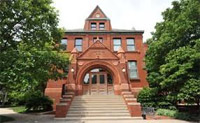Architecture, College of

Masters in Architecture Program: Theses
First Advisor
David Newton
Date of this Version
Spring 5-2020
Document Type
Thesis
Citation
Cudaback, Hayden. 2020. “Representational Forms: Storytelling of Climate Change.” Master's thesis, University of Nebraska-Lincoln.
Abstract
Climate change is recognized as one of the biggest threats to our natural world and its biodiversity, as well as to global security, human health and well-being. We are already witnessing the early effects of climate change, with more frequent, extreme weather events and changing seasonal patterns being seen around the world.
Climate change is a complex object that you can’t physically connect with. Its effects can be felt, but climate change itself is an entity that people can’t understand the depth and magnitude. This characteristic of climate change makes any depiction related to its effects static and two dimensional. Climate change is more than one cause and one effect; but acts as a network of relationships.
Climate change is the fundamental design problem of our time. All other concerns, though many profoundly important, are nonetheless secondary. The threat climate change poses is existential, and buildings are hugely complicit as they consume 40% of the energy in the US anuually, and emit nearly half of the carbon dioxide.
Architects face a choice: to remake the built environment so that it produces a less harmful result, or to carry on and live with the consequences.
Under the Supervision of Professor David Newton


Comments
A design thesis Presented to the Faculty of The College of Architecture at the University of Nebraska-Lincoln In Partial Fulfillment of Requirements For the Degree of Master of Architecture, Major: Architecture, Under the Supervision of Professor David Newton. Lincoln, Nebraska: May, 2020
Copyright 2020 Hayden Cudaback